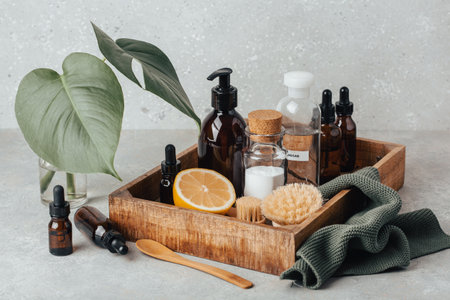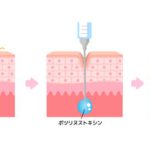1. How Stress Impacts Your Skin
We all know stress can mess with our mood, sleep, and energy—but did you know it can also take a serious toll on your skin? When youre under stress, your body goes into “fight or flight” mode, triggering a series of changes that can show up right on your face. Heres how it works in simple terms:
Increased Cortisol Levels
Cortisol is often called the “stress hormone.” When youre stressed out, your body produces more of it. While cortisol is helpful in small amounts, chronic stress causes it to stay elevated longer than it should. High cortisol levels can:
- Trigger excess oil production in your skin, leading to breakouts and acne
- Break down collagen and elastin—proteins that keep your skin firm and youthful
- Slow down the skin’s natural repair process
Inflammation and Sensitivity
Stress also increases inflammation throughout your body, including your skin. This can lead to redness, irritation, and flare-ups of existing conditions like eczema, psoriasis, or rosacea. Even if you don’t have a chronic skin condition, stress-induced inflammation can make your skin look dull and feel more sensitive.
Premature Aging
If you’ve ever looked in the mirror after a rough week and thought you looked older—youre not imagining things. Chronic stress speeds up the aging process by damaging skin cells and weakening the skin barrier. Over time, this leads to:
- Fine lines and wrinkles appearing sooner
- A loss of elasticity in the skin
- A tired or uneven complexion
The Science Behind It: A Quick Look
| Stress Response | Impact on Skin |
|---|---|
| Cortisol increase | More oil production → Acne & clogged pores |
| Cytokine release (inflammation) | Irritation, redness, worsening of existing conditions |
| Collagen breakdown | Poor elasticity → Fine lines & sagging skin |
A Vicious Cycle
The problem with stress-related skin damage is that it often creates a vicious cycle. You feel stressed → Your skin breaks out or looks tired → That makes you feel even more stressed. Understanding this connection is the first step toward breaking the cycle.
2. The Role of Detox in Skin Health
When we talk about skin health, many people immediately think of skincare products or beauty treatments. But one of the most important — and often overlooked — factors is how well your body detoxifies itself. Your skin is actually one of the key organs involved in detoxification, and when your internal detox systems are overloaded, it can show up on your skin as breakouts, dullness, irritation, or premature aging.
How the Body Naturally Detoxes
Your body is equipped with several detoxification systems that work together to filter out toxins and waste. These include:
| Organ | Main Detox Function |
|---|---|
| Liver | Breaks down toxins and processes them for elimination |
| Kidneys | Filter blood and remove waste through urine |
| Skin | Excretes toxins through sweat |
| Lungs | Release carbon dioxide and airborne toxins |
| Digestive Tract | Eliminates waste and harmful bacteria via bowel movements |
Stress, Toxins, and Skin: What’s the Connection?
When you’re under stress, your body produces more cortisol — a hormone that not only affects your mood but also impacts your liver’s ability to detox effectively. At the same time, stress can lead to poor dietary choices (like sugar or alcohol), which add even more strain on your detox organs. All of this creates a buildup of toxins in your system, and guess what? Your skin ends up picking up the slack.
Common Skin Issues Linked to Poor Detoxification:
- Acne and breakouts
- Dull or uneven skin tone
- Puffiness and inflammation
- Premature wrinkles or sagging skin
- Eczema or other chronic skin conditions
Supporting Your Body’s Detox = Supporting Your Skin
You don’t need a fancy juice cleanse to support detoxification. Simple daily habits can go a long way:
- Hydrate: Drinking plenty of water helps kidneys flush out waste.
- Eat whole foods: Leafy greens, fruits, fiber-rich veggies, and healthy fats all support liver function.
- Sweat it out: Exercise or sauna sessions help eliminate toxins through sweat.
- Avoid processed foods: Limit alcohol, sugar, and refined carbs that slow down detox pathways.
- Manage stress: Meditation, deep breathing, or yoga can reduce cortisol levels and improve overall detox efficiency.
The more efficiently your body gets rid of internal toxins, the clearer and more radiant your skin will look. Think of detox as an inside-out skincare routine — taking care of your liver and other organs is just as important as what you apply topically.

3. Signs Your Skin Needs a Detox
When life gets stressful, your skin often shows it first. Stress can lead to hormonal imbalances that trigger inflammation and slow down your bodys natural detox processes. This means toxins can build up in your system—including your skin. If youre noticing changes in your complexion, it might be time to consider a skin detox.
Common Signs of Toxin Buildup in the Skin
Your skin is your body’s largest organ, and its also one of the first places to show signs when something’s off internally. Here are some telltale signs that your skin might be dealing with toxin overload:
| Sign | What It Looks Like | Why It Happens |
|---|---|---|
| Breakouts | Pimples, blackheads, or whiteheads around the face, jawline, or back | Toxins and stress hormones can increase oil production and clog pores |
| Dullness | Lack of radiance, uneven tone, or tired-looking skin | A buildup of dead skin cells and poor circulation from stress slows cell turnover |
| Sensitivity | Redness, irritation, or stinging when applying products | Compromised skin barrier due to inflammation and toxin exposure |
| Dry Patches | Flaky areas that feel rough or tight | Toxins may interfere with hydration levels and weaken the skins moisture barrier |
| Dark Circles or Puffiness | Under-eye shadows or swelling that doesn’t go away easily | Poor sleep and toxin buildup can affect lymphatic drainage and circulation |
Why These Signs Matter
These symptoms are more than just cosmetic—they’re your skin’s way of asking for help. While occasional breakouts or dullness are normal, frequent or persistent issues may indicate that your body is under stress and needs support through detoxification strategies like better nutrition, improved sleep, and skincare routines tailored to calming and cleansing the skin.
4. How to Effectively Support Your Body’s Detox Process
When it comes to achieving healthy, glowing skin, detoxing your body the right way can make a big difference—especially when stress is in the mix. High stress levels can interfere with your bodys natural detox systems, leading to breakouts, dullness, and other skin concerns. Here’s how you can support your body’s detox process through simple lifestyle habits, smart dietary choices, and easy skincare routines.
Healthy Lifestyle Habits to Boost Detox
Your daily routine plays a huge role in helping your body eliminate toxins and reduce stress-related skin issues. Here are some key habits to consider:
| Lifestyle Habit | How It Helps |
|---|---|
| Stay Hydrated | Drinking plenty of water supports kidney function and helps flush out toxins that could otherwise show up on your skin. |
| Get Quality Sleep | Your body repairs itself during sleep. Lack of rest can lead to inflammation and poor skin health. |
| Move Your Body | Regular exercise boosts circulation and encourages lymphatic drainage, helping detox processes work more efficiently. |
| Breathe Deeply | Deep breathing reduces cortisol (the stress hormone) and helps oxygenate your blood for clearer skin. |
Nourish with Detox-Supportive Foods
Certain foods naturally help your body get rid of waste more effectively while also promoting better skin. Try adding these into your meals:
- Lemon water: Aids digestion and liver detoxification first thing in the morning.
- Leafy greens: Packed with antioxidants that combat oxidative stress on the skin.
- Berries: Rich in vitamins C and E, which support collagen production and skin repair.
- Tumeric & ginger: Both have anti-inflammatory properties that benefit both internal organs and skin clarity.
A Skincare Routine That Supports Detox
Your skin is one of the bodys largest detox organs. Supporting it from the outside is just as important as what you put inside. Keep things simple but consistent with these steps:
Cleansing
A gentle cleanser removes dirt, sweat, and pollution without stripping away natural oils. Look for ingredients like green tea or charcoal for added purifying benefits.
Exfoliation
Exfoliate 1–2 times per week to remove dead skin cells and unclog pores. Avoid harsh scrubs—opt for chemical exfoliants like AHAs or BHAs if your skin can tolerate them.
Treatment Serums
Add serums that contain niacinamide or vitamin C to help brighten dull skin caused by stress or toxin buildup.
Masks & Tools
A clay mask once a week can draw out impurities. Using tools like jade rollers or gua sha may help stimulate lymphatic flow under the skin.
A Quick Detox-Supporting Skincare Routine
| Step | Description |
|---|---|
| Cleansing | Mild cleanser with detox ingredients like green tea or charcoal |
| Toning | A hydrating toner to rebalance pH levels after cleansing |
| Treatment Serum | Add antioxidants like vitamin C or calming ingredients like niacinamide |
| Moisurizer + SPF (AM) | A lightweight moisturizer with SPF to protect from UV damage |
5. Managing Stress for Healthier Skin
Stress doesn’t just mess with your mood—it can also take a real toll on your skin. When youre constantly stressed, your body releases cortisol, a hormone that can trigger inflammation and lead to breakouts, dullness, and even premature aging. The good news? You can take control by managing stress in healthy ways that support your skin from the inside out.
Simple Ways to Reduce Stress and Boost Your Glow
Incorporating stress-reducing habits into your daily routine can make a noticeable difference in how your skin looks and feels. Here are some easy, proven methods:
| Stress-Relief Technique | Skin Benefits |
|---|---|
| Mindfulness & Meditation | Helps calm the nervous system, reducing inflammation and promoting clearer skin. |
| Regular Exercise | Boosts circulation, flushes out toxins through sweat, and lowers stress hormones. |
| Adequate Sleep | Supports skin cell repair and collagen production for a youthful appearance. |
Make It a Daily Habit
You don’t need to overhaul your life overnight. Start small—try a 10-minute breathing exercise before bed or swap one screen time session for a short walk outdoors. Over time, these little changes add up to big improvements in both your stress levels and your skin’s overall health.
Your Skin Reflects How You Feel Inside
The connection between mental wellness and skin health is stronger than many people realize. By managing stress through mindfulness, movement, and rest, youre not just improving your well-being—you’re giving your skin the tools it needs to stay radiant, balanced, and resilient.
6. Choosing the Right Skincare for Stressed and Toxin-Loaded Skin
When your skin is dealing with stress and toxin overload, it needs more than just a quick fix. The right skincare can make a big difference by calming inflammation, supporting detoxification, and restoring a healthy glow. Understanding which ingredients to look for—and what products are worth investing in—can help you build a routine that truly supports your skin’s recovery.
Key Ingredients That Support Detox and Stress Recovery
Certain skincare ingredients are especially effective at helping stressed-out skin bounce back. Here’s a breakdown of what to look for:
| Ingredient | Benefits | Common Product Types |
|---|---|---|
| Niacinamide (Vitamin B3) | Reduces inflammation, strengthens skin barrier, evens skin tone | Serums, moisturizers |
| Green Tea Extract | Packed with antioxidants to fight free radicals and soothe irritation | Toners, masks, eye creams |
| Activated Charcoal | Draws out impurities and toxins from the pores | Cleansers, masks |
| Aloe Vera | Soothes redness and hydrates stressed skin | Gels, moisturizers, after-sun care |
| Squalane | Mimics natural skin oils to hydrate without clogging pores | Oils, serums, creams |
| Probiotics & Ferments | Balance skin microbiome and improve resilience against environmental stressors | Creams, serums, mists |
| Vitamin C (Ascorbic Acid) | Brightens dull skin and supports collagen production under stress conditions | Serums, spot treatments |
| Bentonite or Kaolin Clay | Absorbs excess oil and detoxifies pores naturally | Masks, cleansers |
Tips for Building a Skin-Calming Routine
Step 1: Gentle Cleanse Without Stripping Oils
Use a sulfate-free cleanser that removes dirt and toxins but keeps your natural oils intact. Look for ingredients like chamomile or oat extract.
Step 2: Add an Antioxidant Serum in the Morning
A serum rich in vitamin C or niacinamide can protect your skin throughout the day while targeting stress-related dullness and pigmentation.
Step 3: Use a Calming Moisturizer at Night
Your nighttime routine should focus on repair. Choose a moisturizer with squalane or probiotics to boost overnight recovery.
Step 4: Weekly Detox Masking Rituals
Add a clay or charcoal mask once or twice a week to help draw out toxins and reset your pores. Follow with hydration to prevent dryness.
Pro Tip:
If youre going through a particularly stressful period—like finals week, work deadlines, or moving—keep travel-size soothing products in your bag. A hydrating mist or calming balm can give your skin some instant relief during the day.
The key is consistency and listening to what your skin is telling you. When you choose ingredients that support detoxification and calm inflammation, youre not just treating symptoms—you’re helping your skin rebuild its strength from within.


